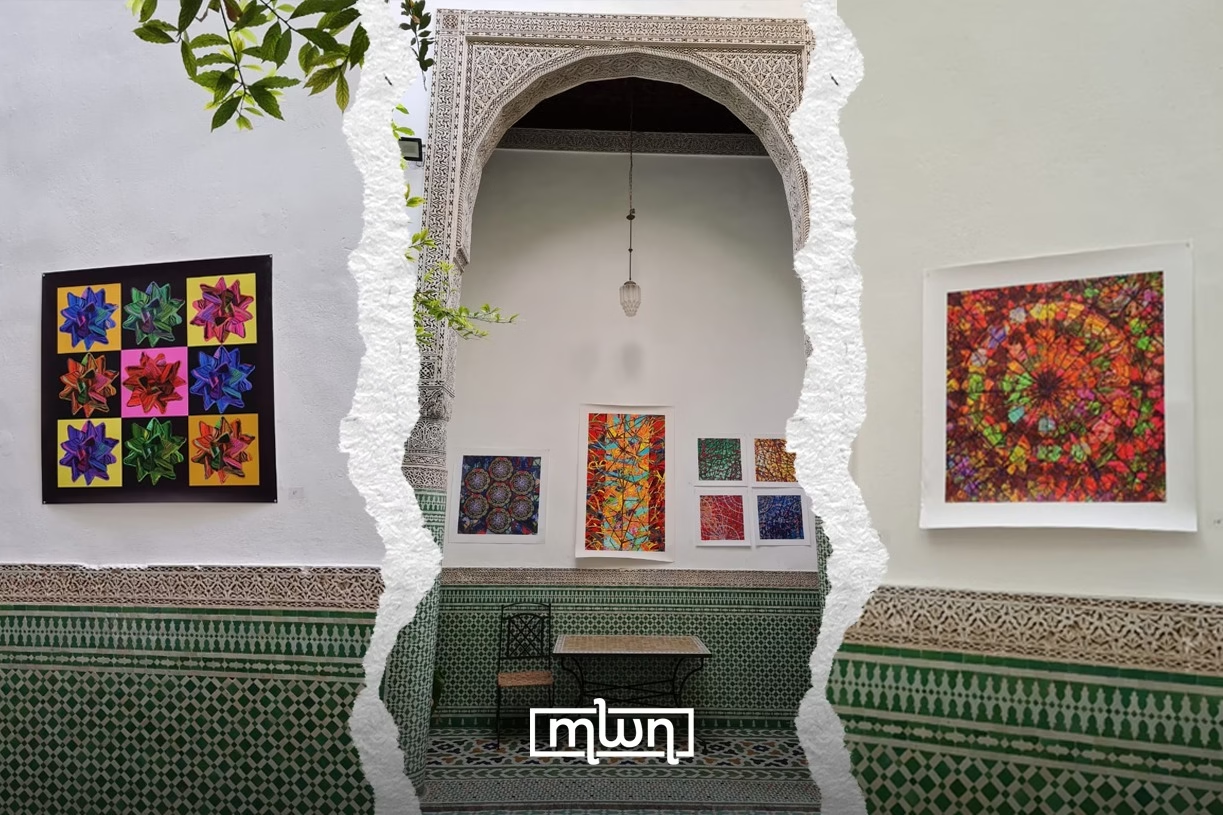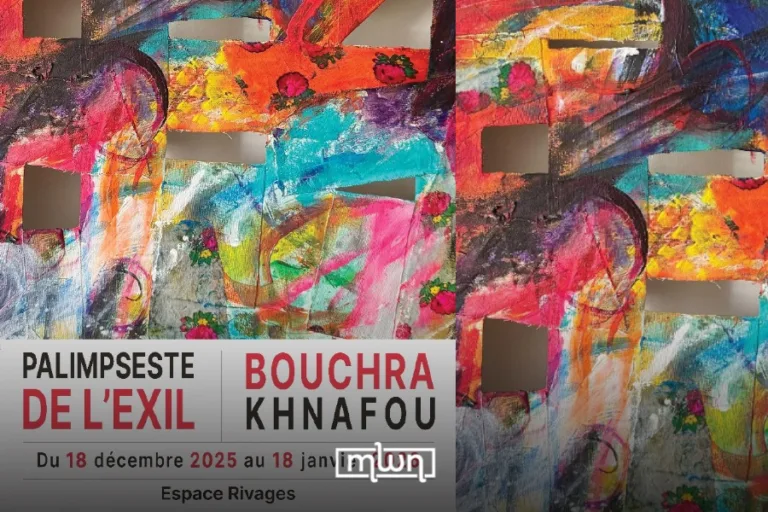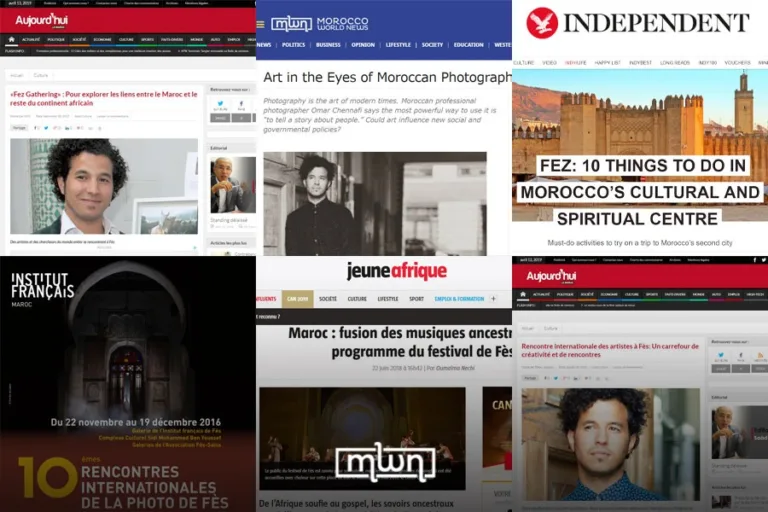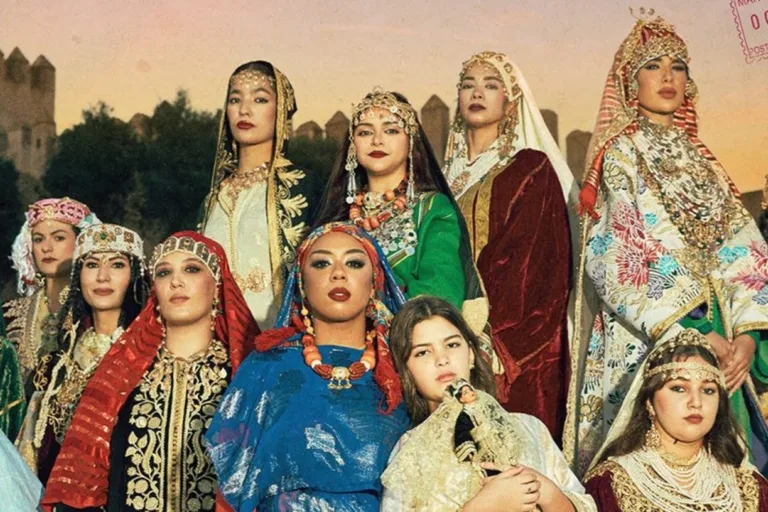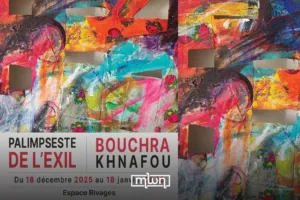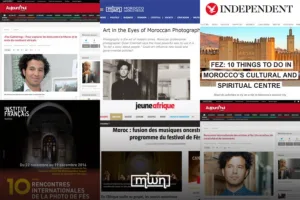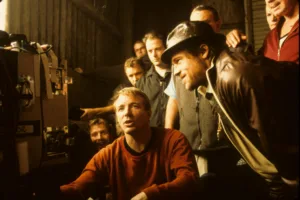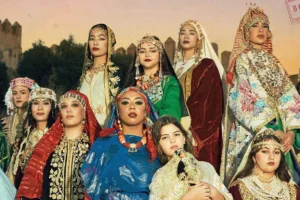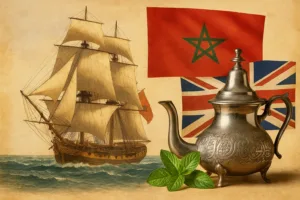In a quiet riad during the Fez Festival of Sacred Music, Daniel Johnson’s Mystic Geometry turns sacred patterns into glowing, abstract reflections of the self.
Fez – For American painter Daniel Johnson, Fez wasn’t just another stop on his global travels; it was the beginning of a long artistic love affair.
“Fez was the first city I truly fell in love with,” he tells MWN. “I always thought it would be fantastic to exhibit my work here.”
And now, decades later, his dream has materialized in the form of a vibrant, thought-provoking exhibition nestled in a traditional riad during the Fez Festival of Sacred Music.
Titled Mystic Geometry, the exhibition is a striking blend of Islamic design, digital innovation, and mixed media painting.
But don’t expect traditional symmetry or predictable motifs. Johnson distorts the patterns, zooms in to their details, and reimagines them with a vivid, almost electric energy.
“Sometimes you can’t even tell they’re based on Islamic design,” he explains. “But for me, that’s the essence: uncovering the structure behind reality. That’s what Islamic art is about.”
Johnson’s journey began in the U.S., where he grew up around art; his mother was a painter, and summer classes at the local art museum were a fixture of his youth.
That creative spirit followed him into adulthood, eventually leading him to become a full-time artist in New York City.
Over the last twenty years, Johnson’s style has evolved to incorporate digital tools into traditional painting, creating hybrid works that feel both ancient and futuristic.
“Digital art opened up a whole new world,” he says. “Now I’m printing on transparent vinyl and backlighting it, it’s like creating stained glass windows, except it’s all born from code and color.”
He draws inspiration from Moroccan madrasas and their iconic stained glass, as well as the endless interplay of light and geometry in Fez’s architecture.
‘Geometry is structure, it’s order, it’s behind everything’
The result is immersive, pulsing works that seem to glow from within.
But this isn’t just about aesthetic pleasure. Johnson’s work invites a deeper contemplation. “I’m not interested in identity or portraiture. There’s already enough of that,” he says. “My goal is for people to see themselves through abstraction, to reflect on what colors and shapes resonate with them, without being told what to feel.”
That kind of inner dialogue is essential to what he calls the “mystic” aspect of his geometry. “Geometry is structure, it’s order, it’s behind everything. And in Arabic philosophy and mathematics, there’s this deep connection between the mystical and the mathematical,” he explains. “I think that’s something intuitive for Moroccan culture.”
Morocco calling
His connection to Morocco spans decades. As a student at the American College in Paris, Johnson hitchhiked to Morocco, ending his trip in Marrakech but stopping first in Fez.
The welcome he received, being invited into homes, immersed in the warmth of the people, left a lasting impression.
Years later, he returned, this time with a portfolio of work in hand, just as the Fez Festival was taking place, and answered the invitation of Omar Chennafi.
“I had my canvases with me from exhibitions in Rabat and Casablanca,” he says. “I showed them to Omar, and he loved them. That’s how this all started.”
The timing aligned with the Fez Festival of Sacred Music, and Johnson made the intentional choice to run his exhibit in parallel.
“This week, with all this energy from the festival, it felt right. The music, the colors, the spiritual atmosphere, it all flows together.”
That synergy reached its peak during a recent concert inside the riad, where Johnson’s paintings lined the walls.
“The room was packed, the music was incredible, and my art was part of that atmosphere.
It was electric. That wasn’t even planned; it just happened. Total serendipity,” he smiles.
Art as an exciting process of discovery
Talking about art is necessarily, almost automatically, talking about the emotions that guide that work of art, which made it possible in the first place.
For Daniel he reflects on the creative process itself. At first, there’s always the unknown, not knowing where a piece will end up. But eventually, he explains, something takes over; the art starts telling you what it wants. It becomes this exciting process of discovery.
Among the pieces in the exhibit, one holds a special place in Daniel’s heart: a vibrant blue geometric design, accented with orange-yellow backlighting.
“That was one of the first ones I did in this series,” he says. “It’s about organic life and geometric structure: two elements playing off each other.
I’d love to animate it one day, make it move. That would be phenomenal.”
Another favorite includes a shimmering gold-on-blue canvas, evoking the richness of an icon. “You can’t print gold,” he notes, “so I painted it. It adds that tactile, sacred quality.”
The space of the riad itself enhances the work in ways even Johnson hadn’t anticipated. The riad’s atmosphere aligns perfectly with his art.
Capturing, feeling Fez – just being present
The geometry of the building, the garden, the natural light. It’s like the paintings are exactly where they belong.
He sees his work as a kind of conversation with the space around it. “Look at that painting and the table beneath it, it’s all in dialogue. This is a contemporary take on what Fez has always been.”
And while he’s thrilled to finally exhibit in Fez, he wishes for more interaction with locals. “I’d love to talk to more people, hear what they see, what they feel. I haven’t had that yet, but maybe it’s coming.”
As the last rays of sunlight filtered through the arches of Fez, Daniel Johnson stood quietly beside his work, neither explaining nor decoding, just present.
“I don’t want to teach anything,” he had said earlier, “I just want people to feel.” And perhaps that’s the quiet power of “Mystic Geometry”: not in what it shows, but in what it gently awakens, a sense of stillness, a memory of the sacred, a reminder that beauty, like truth, often speaks in silence.
Looking ahead, Johnson dreams of bringing his art into the heart of Fez’s winding, centuries-spanning medina, perhaps even into the sacred geometry of a madrasa.
“Would that ever happen?” he wonders aloud. “Probably not. But then again, maybe Mystic Geometry is the one thing that could make it possible.”
Read also: A Royal Rescue: How King Hassan II Saved Alexandre Dumas’ Dream Home

